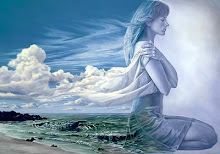 DNA is short for deoxyribonucleic acid. DNA is what carries the instructions God put into us for what we look like and how our bodies work. Every species of organism has it, except for bacteria. Birds are born with DNA that makes them able to fly. We humans are all different. Some of us are tall, some of us have brown eyes, some of us have curly hair. But humans are generally not born with feathers.
DNA is short for deoxyribonucleic acid. DNA is what carries the instructions God put into us for what we look like and how our bodies work. Every species of organism has it, except for bacteria. Birds are born with DNA that makes them able to fly. We humans are all different. Some of us are tall, some of us have brown eyes, some of us have curly hair. But humans are generally not born with feathers.A chromosome is a long strand of DNA wrapped around proteins. A gene is a length of DNA. Our genes are arranged along the chromosome like beads. Each chromosome has many genes. Within a species, a gene for a certain characteristic, such as black hair or blue eyes, is always on the same place on the same chromosome.
Each cell has two copies of each gene, one from each parent. These two same genes are called alleles. The combination of alleles is what makes each individual unique. The number of possible combinations is practically countless, with the thousands of genes in a chromosome.
A cell duplicates its chromosomes, its DNA, before it divides. A DNA is not a single molecule but is, instead, a double one. This gives it the ability to divide and reproduce. DNA is like a twisted zipper, with the bases the interlocking teeth of the zipper.
When DNA is duplicated, the two strands of DNA separate. The zipper unfastens. Enzymes, special proteins that control the speed of chemical reactions in the cell, bring nucleotides, small subunits on the chains of DNA, to the two DNA strands. The nucleotides link up with exposed bases and join together to form new strands attached to the originals. The result is two double strands.

No comments:
Post a Comment